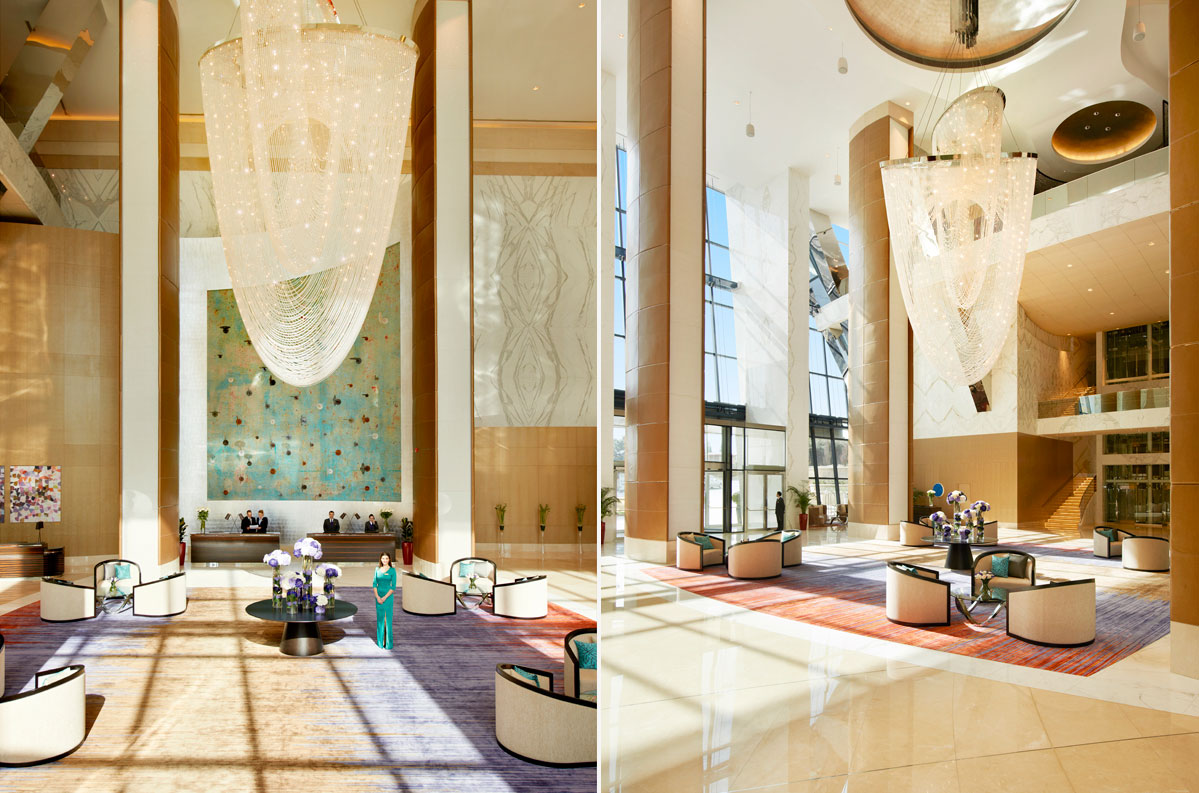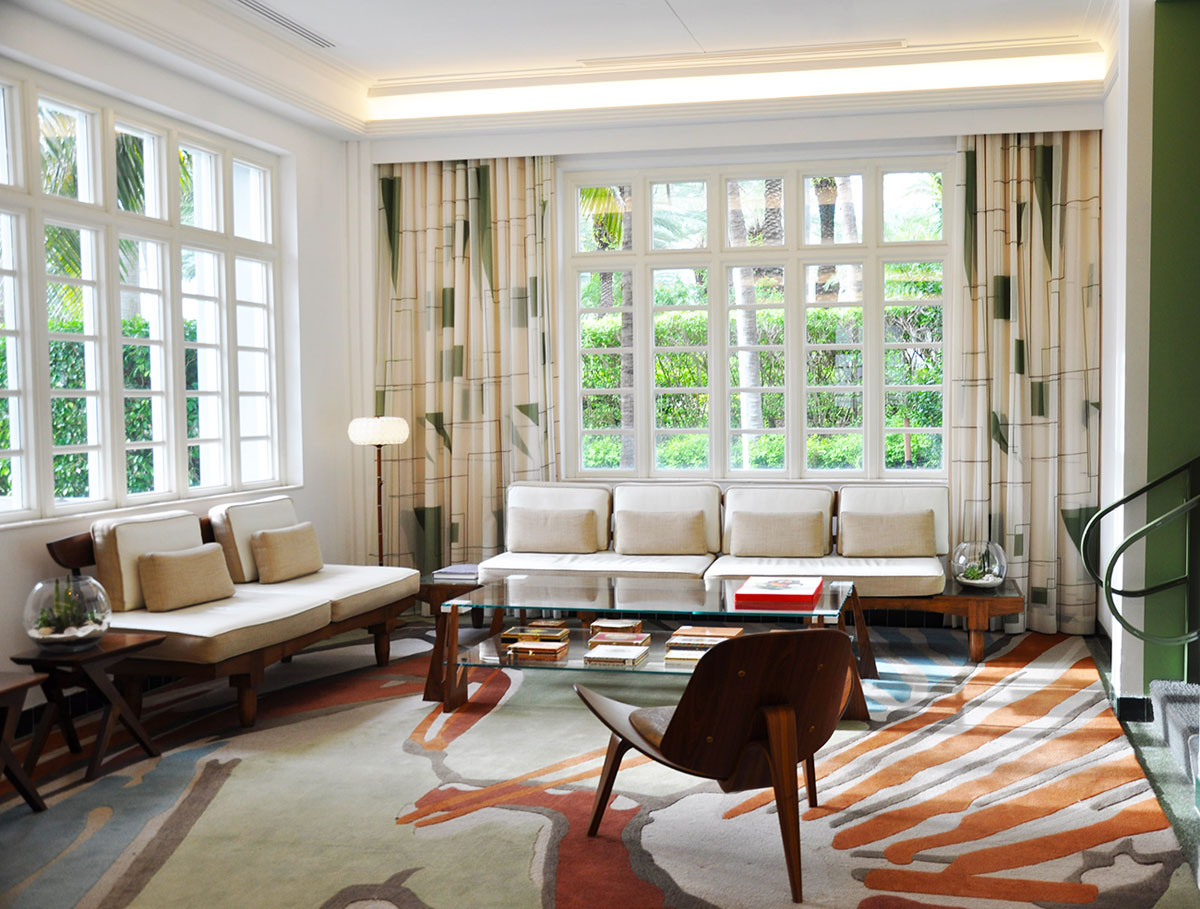Marc Janssen and ICE International
From the Baccarat Hotel to generational family partnerships, how one Dutch company is redefining floor coverings, one carpet at a time


Oftentimes called “the fifth wall,” carpets play a hugely important role in interior decorating. Marc Janssen, one of the world’s foremost rug-makers, puts it simply when he says he loves “reading a newspaper and just sitting on it.” But, as an object that straddles the intimacy of furniture, the beauty of artwork and the defining role of walls, floor coverings also must withstand heaps of abuse. While Janssen and his family’s company make jaw-dropping, high-function designs, their work stands out for what perhaps is the key to their success, the defining factor in luxury, and the line between design and art: their story.
ICE—the label started by Janssen’s father (Frits Janssen) over four decades ago in Utrecht—built a reputation for impeccable craftsmanship that uses first-rate materials. This legacy goes back to when Frits forged relationships with craftspeople in Nepal and India. It continues today as multi-generational partnerships between families (Janssen remembers meeting his current Nepalese counterpart when they were both 10 years old) and in philanthropic efforts to help sustain the people and cultures of the regions today. Add to it an in-house design team, and Janssen’s savvy international expansion into hospitality, and you have a portrait of a thriving 21st century design business.

Marc, a product of business school and four years at Procter & Gamble, might seem like the typical young upstart intent on monetizing the family trade. And while it’s true that he always dreamed of working internationally, when he called his father, told him he was joining ICE and surprised him by actually doing it, his motivation was purely to join the family business. The foray into hospitality was the result of a happy accident. It started with a suggestion at a trade show in Dubai seven years ago, followed by other strokes of good luck—like discovering Yabu Pushelberg’s card among many others handed to him at Maison et Objet—that he turned into his eponymous brand Marc Janssen.
Janssen credits ICE’s many years of experience and the way his in-house designers balance the desired look and technical capabilities as central to this rapid growth. “It’s nice to make something very funky and original, create a lot of attention,” he says, “but at the end of the day the client also has to be happy after a year.” Which is not to say that Marc Janssen carpets are anything less than stunning.

Pieces like their signature ombre designs, seen in the Hirsch Bedner Associates-designed lobby of the Fairmont Flame Towers in Baku, Azerbaijan, elegantly marry new-world visions with old-school techniques. The process begins with a computer-generated design and entirely hand-prepared materials. After hand-spinning and hand-dying fibers, the richly yet unevenly colored yarns are hand-tufted for a painterly result: perfectly imperfect floor coverings.
The old-meets-new approach lends itself well to unusual shapes, uses and patterns too, as seen in one of Janssen’s first projects for Philippe Starck, a hand-tufted wool carpet that impressively looks like wood grain for Le Paradis Du Fruit’s private dining room in Paris. Designed to fit seamlessly inset next to an actual wooden floor, the carpet’s many colors made it technically difficult for his team to get Starck’s vision right.
Underlying this commitment to good work is the goal of making his team the best carpet design firm in the world, an ambition only rivaled by the Janssen family’s project, Care & Fair. The mission, cofounded by Frits in 1994, brings healthcare, women’s empowerment and education to families who make carpets in Nepal and India. While their Nepal factory, the people working there and the Care & Fair clinic and school were all spared by the recent tragic earthquakes, Janssen and his family are raising funds through the organization to provide additional relief.

At the heart of it all are the partnerships that Marc and his family have forged with the rug-makers and their families over the years. These relationships (now on their second generation but Marc says they’re already preparing the third) mark a unique turn in the history of rug-making. While Nepal factories continue to close, some of the craftspeople doing hand-knotting and hand-weaving for Marc Janssen and ICE have been doing it for over 30 years.
This expertise comes through in their work, not just in how “if you see products next to each other, you know” the difference, as Marc puts it. But, knowing the backstory reveals something else. Describing the trust involved in the close collaboration between his counterpart in Nepal (who he calls a brother) Marc says there’s no contract that can come close, “We just want to do one thing and it’s make beautiful rugs.”
Images courtesy of Marc Janssen












